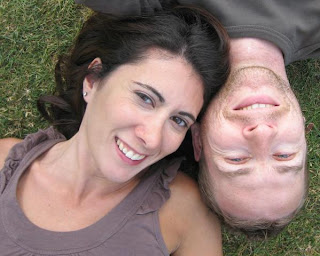Que?

When I told a French work colleague I would be spending Easter in the rural region of Burgundy she looked at me blankly. Surely she’s heard of it I thought. ‘You know, famous for its wineries’ I said, ‘the capital is Dijon… where the mustard comes from’. ‘Ooohhhh’, she said, suddenly getting it, ‘you mean Bourghhhhunh…’ pronouncing the word like she was simultaneously clearing her throat.

This would be the first of many times when our feeble attempts at the language were met with complete incomprehension, so that by the end of the trip even the ‘oui’s and ‘merci’s were coming out doubtfully. Not that I’m complaining - I’m all for places that couldn’t care less what language the tourists speak – it makes you feel like you are visiting an actual place, rather than the place that has been created with your intended visit in mind. And there are times when the language barrier can come in handy - like I don’t really know what the man at the market stall was saying when I took this photograph of his hats, but I’m pretty sure it was something along the lines of, ‘Hey, you! Stop taking photographs of my hats!’ But not understanding I just innocently smiled as if to say, ‘Thank you for asking, but I’m right for hats at the moment’.




One of the main things we wanted to do on our trip was ride bikes along the country roads and vineyards, stopping at small villages along the way. The first half hour of our excursion saw us on a road strongly reminiscent of the Princes Highway and conspicuously unlike the pictures on the brochure. Fortunately it was a case of missing the turnoff rather than false advertising and we were soon experiencing all that had been promised. Wineries, rolling fields, a slower pace of life.




Entries to the villages are clearly marked, as you might expect, but they also let you know where the village ends, with an ominous crossing out of the town name. It seems so definite – as if they are saying, ‘You leave our village – you are dead to us now!’


Other things:
An owl carved into a 13th century gothic church – now the symbol of Dijon – which is also famous for its gingerbread (and should also be famous for serving superb rhubarb crumble).





This would be the first of many times when our feeble attempts at the language were met with complete incomprehension, so that by the end of the trip even the ‘oui’s and ‘merci’s were coming out doubtfully. Not that I’m complaining - I’m all for places that couldn’t care less what language the tourists speak – it makes you feel like you are visiting an actual place, rather than the place that has been created with your intended visit in mind. And there are times when the language barrier can come in handy - like I don’t really know what the man at the market stall was saying when I took this photograph of his hats, but I’m pretty sure it was something along the lines of, ‘Hey, you! Stop taking photographs of my hats!’ But not understanding I just innocently smiled as if to say, ‘Thank you for asking, but I’m right for hats at the moment’.




One of the main things we wanted to do on our trip was ride bikes along the country roads and vineyards, stopping at small villages along the way. The first half hour of our excursion saw us on a road strongly reminiscent of the Princes Highway and conspicuously unlike the pictures on the brochure. Fortunately it was a case of missing the turnoff rather than false advertising and we were soon experiencing all that had been promised. Wineries, rolling fields, a slower pace of life.




Entries to the villages are clearly marked, as you might expect, but they also let you know where the village ends, with an ominous crossing out of the town name. It seems so definite – as if they are saying, ‘You leave our village – you are dead to us now!’


Other things:
An owl carved into a 13th century gothic church – now the symbol of Dijon – which is also famous for its gingerbread (and should also be famous for serving superb rhubarb crumble).










